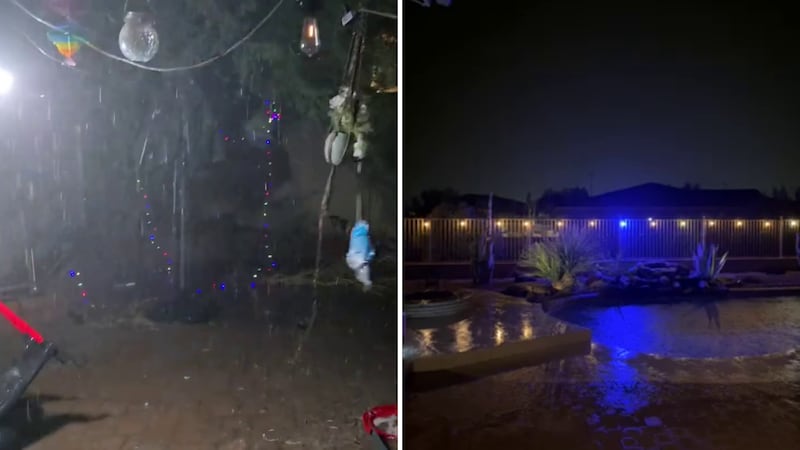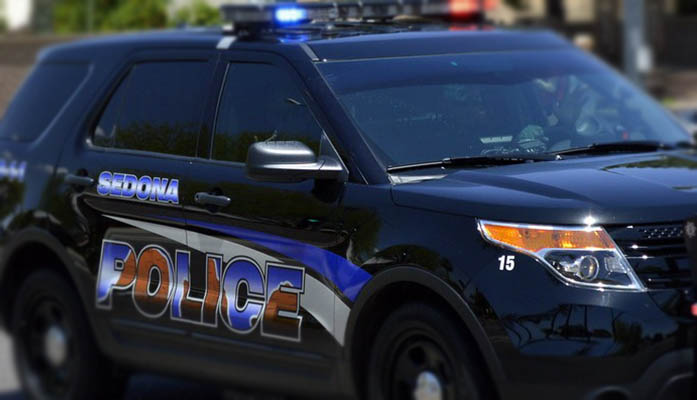

Security Concerns and the Rise of Copycat Violence
The recent incident at a Latter Day Saints church in Michigan, where a 40-year-old ex-Marine tragically set fire to the building, crashed his truck into it, and opened fire on congregants, has ignited a contentious debate about the potential for copycat violence. The harrowing event, which resulted in the loss of four lives and left many injured, may seem like a standalone case. However, when viewed alongside similar high-profile shootings in recent years, it raises serious questions about how certain actions can inspire others to commit equally shocking crimes.
An international security consultant, Karl de la Guerra, voiced his concerns in an interview with Arizona’s Family Investigates. With decades of experience, de la Guerra warned that individuals predisposed to extremist views might be motivated by the lingering shock and media attention surrounding such events. This opinion piece seeks to dig into the underlying issues, unpack related violent incidents, and explore how mass communication might inadvertently encourage similar criminal behavior.
Media Influence and Copycat Incidents
One of the most frequently discussed factors in the wake of these tragic events is the role of the media. The extensive coverage provided by national news outlets can have a double-edged effect. On one hand, detailed reporting is essential for transparency and public trust in law enforcement and justice. On the other hand, the intense spotlight on these crimes can sometimes serve as a blueprint for potential copycats.
Mass Attention and Its Unintended Consequences
The concept of copycat violence is not new. With every incident that garners mass attention, there lies a risk of inspiring individuals who are already on edge or looking for a way to make an impact. The Michigan church tragedy, much like previous high-profile attacks, appears to have elements that were designed to attract widespread notice. This is evident in the calculated manner in which the perpetrator executed his plan—actions that go beyond spontaneous criminal behavior and into the realm of premeditation.
Security experts argue that the way in which these events are covered plays a critical role in shaping public perception and possibly influencing other would-be attackers. Modern reporting often emphasizes details that may seem like the “little details” of the acts, such as the specific methods used, the planning behind the attack, and even the personal history of those involved. This level of detail, while informative, can also inadvertently provide a template for others who may wish to replicate the magnitude of the incident.
Understanding the Media’s Double-Edged Sword
It is important to recognize that the media’s primary role is to inform. However, one must wonder if there could be a more balanced approach that acknowledges the sensitivity required when reporting on extreme acts of violence. With careful framing and a focus on the broader social context—rather than the sensational specifics—news outlets might avoid the unintentional glorification of these acts. Here are some suggestions for how the media might steer through these tricky parts:
- Emphasize the community’s response, highlighting heroic efforts during the crisis.
- Avoid giving undue prominence to the perpetrator’s manifesto or personal background that could inspire future copycats.
- Focus on expert analysis regarding mental health, radicalization, and security measures rather than sensational details.
- Present balanced narratives that explore the societal factors contributing to these acts without promoting fear.
While these suggestions seem straightforward, implementing them in an environment where speed and sensationalism often drive ratings can be a nerve-racking proposition for news organizations. The challenge is to ensure that coverage remains both factual and sensitive, without providing the kind of detailed blueprint that might encourage similar violence.
Lessons from Past Tragedies and Their Lingering Impact
Looking at past incidents, such as the shooting at a Dallas immigration facility and the killing of conservative activist Charlie Kirk, one can notice some recurring themes. Each of these events, though differing in motive and context, shares a common thread—they were all executed in ways that appeared to be intended to make an indelible mark on society. The consistent pattern is that these are not random crimes; they carry specific messages that are meant to resonate with a particular audience.
Comparative Analysis of High-Profile Attacks
To provide a clearer perspective, consider the following table that contrasts the key aspects of these incidents:
| Incident | Location | Method of Attack | Intended Message |
|---|---|---|---|
| Michigan Church Attack | Michigan, USA | Vehicle-ramming, arson, and shooting | To inspire terror and gain media attention |
| Dallas Immigration Facility Shooting | Dallas, USA | Shooting | To protest immigration policies and make a political statement |
| Charlie Kirk Incident | Location Unspecified in Report | Shooting | To amplify extremist political sentiments |
This table paints a picture of how different events, despite various underlying motivations, share a common objective—capturing the public’s attention. When such incidents are interpreted as intentional messaging rather than random outbursts of violence, it becomes even more important to consider how society and media respond to them.
The Ripple Effects on Public Perception and Policy
Each of these events leaves behind a trail of questions about policy and public safety. Law enforcement agencies, community leaders, and policy makers are left tasked with addressing the immediate fallout while also considering long-term preventative measures. The impact on society is both immediate and lasting, affecting how communities view safety and their trust in public institutions.
For instance, security consultants like de la Guerra argue that even in the absence of direct threats, the fear of copycat shooters has led to heightened security measures in public spaces. This reaction, while understandable, also raises questions about the balance between maintaining an open society and ensuring public safety.
Security Protocols for Religious and Community Institutions
The Michigan incident has brought renewed focus on the safety of religious institutions—a setting that many associate with sanctuary and community. The tragedy forces us to figure a path through a maze of practical security measures and a profound sense of vulnerability among congregants.
Assessing Threats Against Religious Centers
Religious institutions, by their very nature, tend to be places of peaceful gathering. However, recent events have exposed that even these havens are not immune to violent attacks. The attack involved not only physical harm through vehicle-ramming and shooting but also psychological devastation—a premeditated attempt to undermine the sanctity of a place of worship.
As congregants were seen sheltering children and providing protection during the crisis, the resilience of community members in the face of such intimidating violence is evident. The heroic actions within these spaces remind us that in the midst of confusing bits and tangled issues, there is an innate drive to protect the vulnerable.
Implementing Effective Security Measures
In response to such threats, religious institutions and other community centers are now rethinking their security protocols. While some measures may seem off-putting or even overwhelming, the need to protect lives makes them super important. Here are some critical steps that can help institutions get around these nerve-racking challenges:
- Conduct regular security assessments to identify potential vulnerabilities.
- Invest in modern surveillance technologies and establish communication protocols with local law enforcement.
- Offer training sessions for staff and congregants on emergency response procedures.
- Create community watch programs to monitor suspicious activities before they escalate.
Although these measures are intended to safeguard against future incidents, they also come with their own set of little twists that need careful management. Balancing open access with secured boundaries is not an easy task—it involves dealing with practical considerations and the fine points of individual rights versus collective safety.
Understanding the Motivations Behind Pre-Meditated Acts
One of the most challenging aspects of these incidents is discerning the underlying message that motivates them. Security experts emphasize that these crimes are, by their very nature, premeditated. The planning involved hints at a desire not only to inflict harm but also to generate maximum media coverage, thereby serving as a form of propaganda for extremist ideas.
Pre-Meditation and the Quest for Attention
Examining the Michigan attack reveals that the actions taken were anything but random. The methods employed—a combination of vehicle-ramming, arson, and firearm use—suggest that the individual carefully considered how to shock a large group of people in a highly visible location. This approach points toward a deliberate attempt to send a message, one that reverberates over social media and news cycles alike.
When de la Guerra mentioned that “the individuals who will be inspired by these events” might take similar paths, he was not implying that these individuals are mindless or uncontrollably violent. Instead, it highlights a broader issue: the existence of pre-existing ideological currents that, when given a platform in the aftermath of such tragedies, could fuel further acts of violence.
Psychological and Social Triggers of Extremist Behavior
The motivations for premeditated acts of violence are often deeply rooted in personal grievances, ideological extremism, or a desire for recognition from a larger audience. Several factors contribute to the emergence of such extreme behavior:
- Feelings of marginalization or disenfranchisement in society
- Exposure to radical ideologies through online platforms and social networks
- The allure of notoriety and the quest to be remembered at any cost
- A perceived breakdown in societal norms and a loss of trust in public institutions
Each of these factors involves not only complex psychological elements but also the practical reality of how personal grievances and societal tension can feed into violent behavior. While it is easy to label these actions as the result of a single cause, the reality is much more tangled and requires us to take a closer look at not just the individual, but the larger environment that fosters such acts.
The Role of Law Enforcement and Community Preparedness
Given the premeditated nature of many of these violent episodes, law enforcement agencies and community leaders are under increasing pressure to figure a path that not only responds to incidents but also mitigates future risks. This balancing act is complex and full of confusing bits, as officials strive to protect civil liberties while ensuring public safety.
Strengthening Community-Police Partnerships
The immediate aftermath of such incidents typically sees a community rallying together, with law enforcement leading the charge to bring perpetrators to justice and provide support to victims. However, building long-term trust and ensuring community preparedness involves ongoing communication and cooperation between the police and the public. Some measures that can strengthen these ties include:
- Regular community meetings to discuss safety concerns and brainstorm preventative strategies.
- Joint training exercises that involve both local police and community leaders.
- Establishing clear communication channels for reporting suspicious behavior.
- Enhancing transparency about investigative processes and policy decisions.
Community engagement not only helps in calming off-putting public fears after a traumatic event but also contributes to the overall resilience of local neighborhoods. When residents feel involved and informed, they are more likely to participate actively in safety measures, thereby reducing the risk of future tragedies.
Modernizing Security Tactics for a Changing Threat Landscape
Law enforcement must also continuously update their strategies to keep pace with the evolving methods employed by those who carry out premeditated acts of violence. By incorporating modern technology and engaging in regular training, officers can better manage your way through the nerve-racking challenges posed by these threats. A few key improvements might include:
- Investing in body cameras and enhanced surveillance systems.
- Collaborating with cybersecurity experts to monitor online extremism and potential threats.
- Offering specialized training on handling mass casualty scenarios and rapid response tactics.
- Integrating crisis intervention teams to support both victims and communities immediately after an attack.
These approaches require cooperation at various levels—from local agencies to federal oversight—and are only effective when tailored to the subtle details of each community’s unique context. The goal is to reduce the window of opportunity for extremist acts while simultaneously ensuring that society remains vigilant and prepared.
Societal Reflections and the Broader Impact
Beyond the immediate concerns of security and law enforcement, these incidents force society to confront broader questions about the state of our culture, the factors that drive individuals toward extreme actions, and the long-lasting impact such tragedies have on community cohesion. These are not just isolated events; they are moments of reckoning that require us to reexamine our collective values and systems.
The Collective Trauma and Its Long-Term Effects
The psychological toll of high-profile violent incidents extends far beyond the direct victims. Communities are left with a sense of vulnerability and a lingering fear that such violence could occur again at any moment. This persistent state of tension can influence many aspects of community life, including how public spaces are designed, how institutions prioritize safety, and even how individuals interact with one another in the aftermath of trauma.
For example, parents may become overprotective when taking their children to places of worship or community centers, while public institutions might institute rigorous security measures that, although necessary, change the way these spaces are traditionally experienced. It is a clear indication that while immediate responses are focused on physical safety, the subtle parts of psychological recovery require extended and thoughtful intervention.
Societal Dialogue: A Necessary Conversation
Public discourse plays a critical role in shaping the response to such tragedies. For a sustainable solution to emerge, there needs to be a balanced conversation that involves law enforcement, policy makers, community leaders, mental health professionals, and the general public. Such a dialogue helps in better understanding the tangled issues surrounding extremist behavior and can foster a more informed citizenry capable of contributing to long-term solutions.
This conversation should also address the societal influences that can lead to violent outcomes. Discussions surrounding family dynamics, economic pressures, online radicalization, and even the role that political rhetoric plays in creating an atmosphere of division can help illuminate the hidden complexities behind acts of violent extremism.
Preventative Measures: Towards a More Secure Future
While it is impossible to completely eliminate the risk of copycat violence, the lessons gleaned from recent incidents suggest that a proactive approach can mitigate the frequency and severity of future attacks. This involves a multi-pronged strategy that incorporates improvements in media reporting, security protocols for public institutions, and community-based intervention programs.
Enhancing Media Responsibility
Media outlets have a powerful role in shaping the narrative around these events. By taking a responsible approach to cover violent incidents, news organizations can avoid inadvertently broadcasting a blueprint for potential copycats. Important steps include:
- Focusing on the aftermath and community resilience rather than excessive detail about the methodology.
- Interviewing security experts and mental health professionals who can provide balanced insights.
- Highlighting preventative measures and success stories in community safety tactics.
- Avoiding repetition of sensationalized details that might resonate with vulnerable audiences.
Media literacy among the public is also essential. When audiences learn to critically evaluate violent news without succumbing to fear or glorification of the perpetrator, the overall impact of sensational reporting is reduced. This collective understanding can help break the cycle of copycat behavior in the long run.
Community Mobilization and Local Initiatives
Local communities serve as the frontline defense in the battle against extremist violence. Grassroots initiatives can play a super important role in creating environments that are resilient to such threats. Some local strategies to bolster community defense include:
- Establishing neighborhood watch programs that work in tandem with local law enforcement.
- Organizing community forums to discuss safety issues and share best practices.
- Developing local support networks that can provide counseling and mental health support after traumatic incidents.
- Encouraging community-based training sessions on emergency response and first aid.
These initiatives not only foster stronger local bonds but also contribute to a culture of preparedness. When communities learn to figure a path through both the tricky parts and the nerve-racking challenges of modern security threats, they become an integral part of the broader effort to reduce violence.
Conclusion: Reflecting on a Path Forward
The incident in Michigan is a stark reminder of the evolving nature of violent extremism. It exposes how premeditated acts carried out for mass attention are not just isolated events, but part of a broader pattern that necessitates a thoughtful, multifaceted response. The concerns expressed by experts such as Karl de la Guerra reveal that the message behind such attacks is carefully crafted, and its dangerous implications reach far beyond the immediate loss of life.
As communities, law enforcement, media, and policy makers work together to figure a path to safety, it is clear that no single solution will suffice. Tackling these challenges requires a joint effort to get around the confusing bits and tangled issues that underpin modern extremist behavior. By strengthening community-police partnerships, supporting local initiatives, and ensuring responsible media coverage, society can begin to curb the cycle of violence and mitigate its long-term impact.
In reflecting on these events, it becomes evident that the road ahead involves much more than reactive measures. It calls for a sustained commitment to understanding the subtle details behind the actions of those driven by extremist ideologies, and a willingness to address those issues at their source. Only by engaging in honest dialogue and taking actionable steps can we hope to create an environment where such premeditated acts become less likely, and where our communities learn to steer through the twists and turns of an increasingly complex threat landscape.
Ultimately, the responsibility lies with all sectors of society to ensure that the memory of the victims is honored not only through words but also through meaningful action. By recognizing the patterns that lead to such tragedies and addressing them with a balanced, proactive approach, we can hang together something more resilient—a community fortified not by fear, but by a collective commitment to safety, understanding, and progress.
Originally Post From https://www.azfamily.com/2025/09/29/security-consultant-worries-about-copycat-shooters-after-high-profile-attacks/?outputType=amp
Read more about this topic at
Similarities between copycat mass shooters and their role ...
THE SCHOOL SHOOTER: A THREAT ASSESSMENT ...



